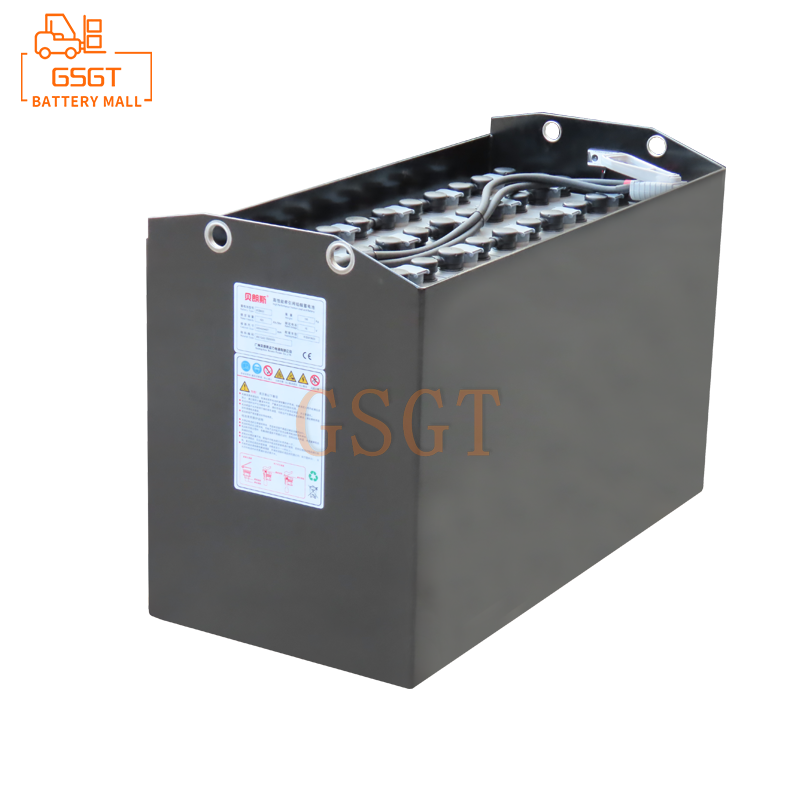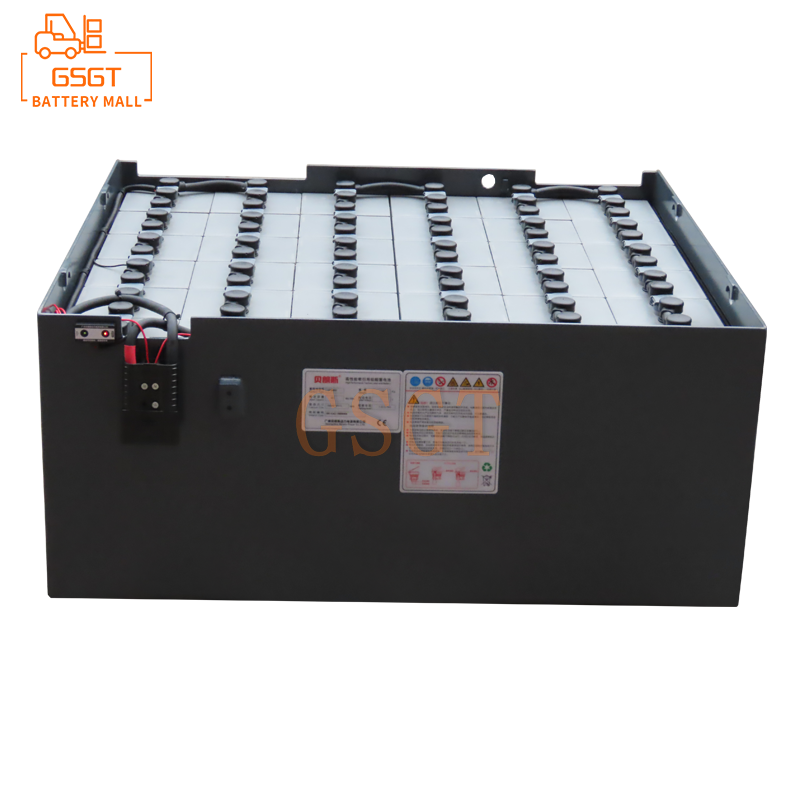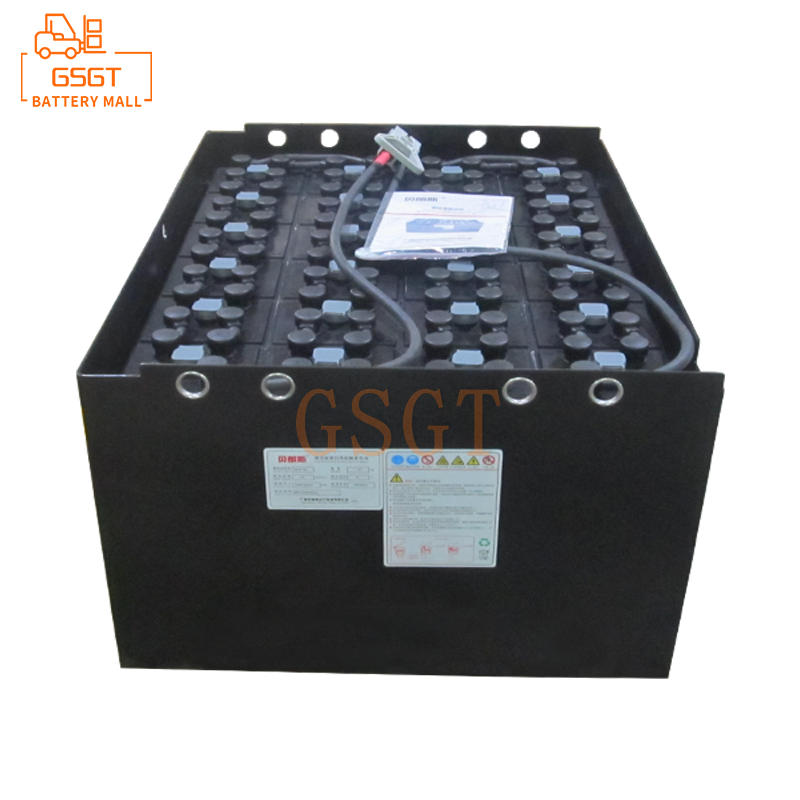Time:2025-04-28 10:35:23
Browse:631
Abstract
This article elaborates in detail the regular inspection items and maintenance plans for lead-acid batteries of forklifts. Forklift lead-acid batteries, as the key power source for forklift operation, their performance and lifespan directly affect the working efficiency and usage cost of forklifts. Through comprehensive and systematic regular inspections and scientific and reasonable maintenance plans, potential problems of the battery can be detected in a timely manner, effectively extending its service life and ensuring the stable operation of the forklift.
1. Introduction
In the modern logistics and warehousing industry, forklifts play a crucial role, and lead-acid batteries, as the main power source of forklifts, their performance directly determines the working capacity and reliability of the forklifts. As the usage time increases, lead-acid batteries will experience various performance degradation and potential faults. Therefore, formulating a complete set of regular inspection items and maintenance plans is of great significance for ensuring the normal operation of forklifts, improving work efficiency, and reducing operating costs.
2. Structure and Working Principle of Lead-Acid Batteries for Forklifts
Lead-acid batteries are mainly composed of positive and negative plates, separators, electrolyte, casings, connecting strips and terminal posts, etc. Its working principle is based on an electrochemical process. During discharge, lead dioxide at the positive electrode and lead at the negative electrode undergo chemical reactions with sulfuric acid in the electrolyte, converting chemical energy into electrical energy. When charging, under the action of an external power source, electrical energy is converted back into chemical energy, restoring the active substances to their initial state. Understanding its structure and working principle helps us better comprehend the necessity of regular inspection items and maintenance measures.
3. Regular Inspection items
(1) Visual inspection
1. Shell Inspection
A shell inspection should be carried out before each use of the forklift or at least once a week. Observe whether there are any damages, cracks, deformations or other conditions on the battery case. The damage to the casing may lead to the leakage of the electrolyte, which not only corrodes the forklift components but also causes environmental pollution and safety hazards. Once the casing is found to be damaged, the battery should be stopped from use immediately and replaced.
2. Pole Inspection
Check whether the terminal posts are corroded or loose. Corrosion of electrode posts will increase contact resistance, resulting in reduced charging and discharging efficiency. In severe cases, it may even cause circuit interruption. If white or green corrosion is found on the surface of the electrode post, it can be cleaned with sodium bicarbonate solution and then coated with special anti-corrosion grease. Meanwhile, use a wrench to check if the connecting bolts of the pole posts are loose to ensure a firm connection.
3. Inspection of Connecting strips
Check whether the connecting strips are intact and whether there are any problems such as breakage or loose connection. The connecting strip is an important component for the connection between batteries and between batteries and the forklift circuit. Poor connection will affect the normal operation of the entire circuit. If any damage to the connecting strip is found, a new one should be replaced in time and the connection should be ensured to be tight.
(2) Electrolyte Inspection
1. Liquid Level Check
Check the electrolyte level at least once every two weeks. Under normal circumstances, the electrolyte level should be 10 to 15 millimeters higher than that of the plates. If the liquid level is too low, the plates will be exposed to the air, causing sulfation of the plates and affecting the capacity and lifespan of the battery. At this point, distilled water or special lead-acid battery replenishment fluid should be added, but tap water must not be added, as impurities in tap water may cause damage to the battery. If the liquid level is too high, the electrolyte is prone to overflow and corrode the forklift components. You can use a suction pipe to suck out the excess electrolyte.
2. Density Check
Measuring the density of the electrolyte with a hydrometer is an important method for determining the charging state of a battery. Generally speaking, when fully charged, the density of the electrolyte is between 1.280 and 1.300g/cm³ (at 25℃). The density of the electrolyte should be measured once a week and records should be kept. If the density value is significantly lower than the standard range, it indicates that the battery is undercharged. It is necessary to extend the charging time or check whether the charging equipment is functioning properly. If the density value is too high, it might be due to excessive evaporation of water in the electrolyte. Distilled water should be added appropriately for adjustment.
3. Electrolyte Quality Inspection
Observe the color and transparency of the electrolyte. The normal electrolyte should be clear and transparent, colorless or slightly yellow. If the electrolyte becomes cloudy, black or has an unpleasant smell, it indicates that the electrolyte has been contaminated or a chemical reaction has occurred, and the electrolyte needs to be replaced. At the same time, check if there are any sediment substances in the electrolyte. Excessive sediment may cause a short circuit in the plates, affecting the performance of the battery.
(3) Electrical Performance Inspection
1. Voltage measurement
After the battery is fully charged and left to stand for a period of time, use a multimeter to measure its terminal voltage. The standard voltage of a single-cell battery is 2V. The voltage of the entire battery pack should be determined based on the number of cells connected in series. For example, a 12V battery pack consists of six individual cells. If the measured voltage is significantly lower than the standard value, it may indicate that there is an internal short circuit or sulfation of the plates in the battery, and further inspection and handling are required. In addition, during the operation of the forklift, the discharge voltage of the battery can also be monitored to understand its discharge performance.
2. Charge and Discharge Test
Regular charge and discharge tests should be conducted, usually once every 3 to 6 months. Through the complete charging and discharging process, one can comprehensively understand the performance indicators of the battery such as capacity and charging and discharging efficiency. During the charging process, observe the changes in charging current and voltage to determine whether the charging equipment is working properly. During the discharge process, record the discharge time and discharge capacity, and compare them with the rated capacity of the battery. If the discharge capacity is less than 80% of the rated capacity, it indicates that the battery performance has significantly declined and maintenance or replacement may be necessary.
3. Internal Resistance Measurement
Measure the internal resistance of the battery using a professional internal resistance tester. Internal resistance is an important parameter reflecting the internal performance of a storage battery. An increase in internal resistance indicates a decrease in the activity of chemical substances inside the battery and the aging of the plates, among other issues. Generally speaking, the internal resistance of a new battery is relatively small. As the usage time increases, the internal resistance will gradually increase. When the internal resistance exceeds a certain threshold, the performance of the battery will decline significantly, and maintenance or replacement should be considered.
4. Maintenance Plan
(1) Daily Maintenance
1. Cleaning
After using the forklift every day, the battery casing should be wiped with a clean damp cloth to remove surface dust, dirt and electrolyte residue, and keep the casing clean and dry. Avoid using chemical cleaners to prevent corrosion of the casing.
2. Check the connection
Check whether the terminal post connections and connection strips of the battery are firm and ensure there is no loosening. At the same time, check whether the connection between the charging plug and the socket is tight to prevent poor contact from causing abnormal charging.
(2) Weekly maintenance
1. Appearance and electrolyte inspection"
Conduct a comprehensive inspection in accordance with the above-mentioned appearance inspection and electrolyte inspection items. Focus on checking whether the casing is damaged, whether the electrode posts are corroded, whether the electrolyte level and density are normal, etc., and deal with the problems found in a timely manner.
2. Ventilation inspection
Check the ventilation of the battery compartment to ensure that the vents are unobstructed. Good ventilation helps to dissipate the heat and hydrogen generated by the battery during charging and discharging, preventing safety accidents such as explosions caused by hydrogen accumulation.
(3) Monthly maintenance
1. Deep cleaning
Carry out a deep cleaning of the battery, including thorough cleaning of the terminal posts and anti-corrosion treatment. Use a special tool to remove the corrosion on the pole post, and then apply new anti-corrosion grease to ensure good contact between the pole post and the connecting wire.
2. Electrical Performance Testing
Conduct voltage measurement and simple charge and discharge performance evaluation. By measuring the voltage, the charging state of the battery can be preliminarily determined. During the operation of the forklift, observe the discharge performance of the battery, such as whether it can meet the normal working requirements and whether there is a rapid voltage drop or other phenomena.
(4) Quarterly maintenance
1. Comprehensive charge and discharge test
Conduct a complete charge and discharge test to accurately assess the capacity and performance of the battery. Based on the test results, analyze the health status of the battery. If a significant decrease in capacity or other performance issues are found, formulate corresponding maintenance measures, such as supplementary charging and activation treatment.
2. Internal Resistance Measurement
Use an internal resistance tester to measure the internal resistance of the battery, compare the historical data, and understand the changing trend of the internal resistance. If the internal resistance increases too rapidly, further inspection should be carried out to see if there are any internal faults in the battery, and maintenance or replacement should be considered in advance.
(5) Annual Maintenance
1. Professional testing and evaluation
Send the battery to a professional testing institution or have it comprehensively inspected and evaluated by professional technicians. The inspection contents include the condition of the plates, the analysis of the electrolyte composition, and the overall performance evaluation of the battery pack, etc. Based on the test results, determine whether the battery needs a major overhaul, replacement of plates or other important components.
2. Equipment Maintenance
Maintain and calibrate the charging equipment that is matched with the battery to ensure the stable performance of the charging equipment and the accuracy of the output voltage and current. At the same time, check whether the charging lines have problems such as aging and damage, and replace the faulty lines in time to ensure charging safety.
5. Common Problems and Solutions
(1) Plate vulcanization
Plate sulfation is a common problem in lead-acid batteries, characterized by the formation of white and hard lead sulfate crystals on the surface of the plates, which leads to a decrease in battery capacity and difficulties in charging. The treatment methods include long-term charging with a small current and using dedicated vulcanization repair equipment for repair, etc. If the vulcanization is severe, the plates may need to be replaced.
(2) Severe self-discharge
Severe self-discharge of a battery can lead to a significant loss of electricity within a short period of time. The possible reasons could be impure electrolyte, leakage of the casing, or shedding of the active material on the plates, etc. When handling, the quality of the electrolyte should be checked first, and the electrolyte should be replaced if necessary. Check whether there are any leakage points on the shell and carry out repairs. For the problem of active material shedding on the plates, if the situation is severe, the battery needs to be replaced.
(3) Heat generation during charging
If the battery gets too hot during the charging process, it may be caused by reasons such as excessive charging current, insufficient electrolyte, or internal short circuit. The charging current should be adjusted to an appropriate range, the electrolyte level should be checked and replenished in time. If an internal short circuit is suspected, professional inspection and maintenance should be carried out.
6. Conclusion
Regular inspection items and maintenance plans for forklift lead-acid batteries are the key to ensuring their performance and lifespan. Through systematic appearance inspection, electrolyte inspection and electrical performance inspection, as well as scientific and reasonable daily, weekly, monthly, quarterly and annual maintenance plans, problems existing in the battery can be discovered and solved in a timely manner, effectively extending its service life and reducing the operating cost of the forklift. Meanwhile, operators should strictly follow the maintenance plan, enhance their attention to battery maintenance, and ensure the safe and efficient operation of forklifts. In practical work, it is also necessary to constantly summarize experiences, and further optimize the inspection and maintenance plans based on the characteristics of different brands and models of batteries to meet the actual needs of enterprises.

$2450

$4045

$4900

$5140

MESSAGE
Professional And Efficient
Security
Affordable Price
Professional Services